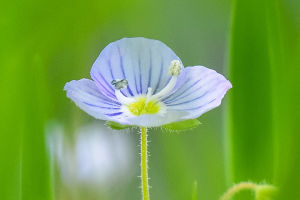Tree Mushrooms
When we think of mushrooms, the common image is often of the ones popping up on our lawns or at the grocery store.
However, the world of fungi extends far beyond these familiar sights, particularly in the fascinating realm of tree mushrooms.
These unique fungi, which grow on trees, play a crucial role in their ecosystems and offer intriguing insights into nature's processes.
1. What Are Tree Mushrooms?
Tree mushrooms, also known as polypores, are a diverse group of fungi that grow on wood. Unlike their ground-dwelling relatives, these mushrooms attach themselves to trees or logs, where they decompose the wood. They come in various shapes and sizes, from shelf-like structures to tiny, inconspicuous dots.
2. The Role in Ecosystems
Tree mushrooms are essential decomposers in forest ecosystems. By breaking down dead wood, they recycle nutrients back into the soil, enriching it and promoting new plant growth. This decomposition process helps maintain the health and balance of forest environments. Without these fungi, dead trees would accumulate and disrupt the ecosystem.
3. Noteworthy Species
Several species of tree mushrooms are particularly notable. The Reishi mushroom, for instance, is famous for its medicinal properties and has been used in traditional medicine for centuries. The Artist's Conk is another interesting species; its surface can be scratched to reveal a natural canvas for creating art. Meanwhile, the Chicken of the Woods offers a unique, edible option with a taste and texture resembling chicken.
4. Fascinating Facts
- Longevity: Some tree mushrooms can live for many years, with their growth patterns revealing a history of the tree's health and the surrounding environment.
- Medical Uses: Many tree mushrooms are not just ecological marvels but also have medicinal benefits, including anti-inflammatory and immune-boosting properties.
- Cultural Significance:In various cultures, tree mushrooms hold symbolic meanings or are used in traditional rituals and remedies.
5. Where to See Tree Mushrooms
Tree mushrooms can be found in forests, woodlands, and even urban parks. They are often spotted on dead or dying trees, stumps, and fallen logs. If you’re looking to explore these fungi, consider visiting a local forest or nature reserve. Spring and fall are the best seasons to find these mushrooms as they tend to flourish in cooler, damp conditions.
6. Conservation and Preservation
Despite their importance, tree mushrooms face threats from habitat destruction and climate change. Conservation efforts are essential to protect these unique organisms and their habitats. By supporting sustainable forestry practices and preserving natural woodlands, we can help ensure the survival of these fascinating fungi.
Tree mushrooms are more than just a quirky part of the forest floor; they are integral to the health of our ecosystems and offer a wealth of benefits and fascinating facts. By understanding and appreciating these remarkable fungi, we gain a deeper respect for the natural world and its incredible diversity.


